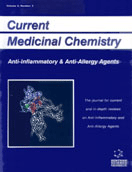Abstract
Human Vγ9 / Vδ2 are a subset of γδ T cells present only in non human primates and humans that have potent in vitro activities both on mycobacteria infected cells and on different cancer cell types. Their hallmark is that they are selectively activated by non peptidic ligands that are in most instances phosphorylated. These phosphorylated compounds (also referred to as phosphoantigens) directly trigger Vγ9 / Vδ2 T cell receptor-expressing cells, without need for MHCrestricted presentation molecules. Most of the known natural phosphoantigens are of microbial origin, and have been determined as low molecular weight components of a metabolic pathway (DOXP, or non mevalonate) specific for some microorganisms and parasites. This pathway leads to the synthesis of farnesyl and genranyl disphosphate, precursors of sterols. Although the nature of tumor antigens recognized by Vγ9 / Vδ2 T cells is still debated, recent data suggest that these are derived from the mevalonate pathway, which leads in most eukaryotic cells to the same geranyl and farnesyl diphosphate, also precursors of sterols, but also used for the farnesylation of proteins such as ras. The physiological significance of recognition of these metabolites by gd T cells will be discussed. Finally we will review several recent immunotherapeutic approaches targeting Vγ9 / Vδ2 T cells, which rely on the use of several synthetic agonists or pharmacological inhibitors of the mevalonate pathway.
Keywords: t cells, phosphoantigens, isoprenoid, 1-deoxy-d-xylulose-5-phosphate (doxp).doxp, infection, cancer, mevalonate pathway
 6
6

